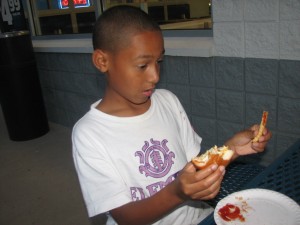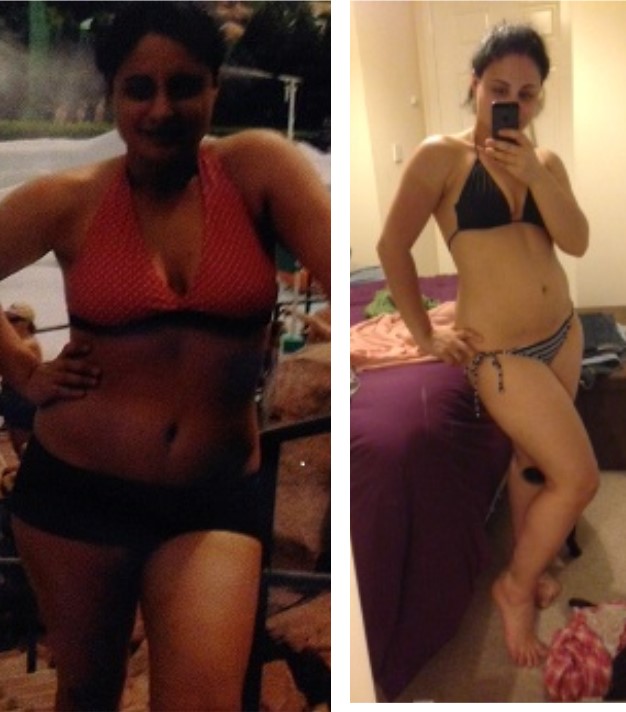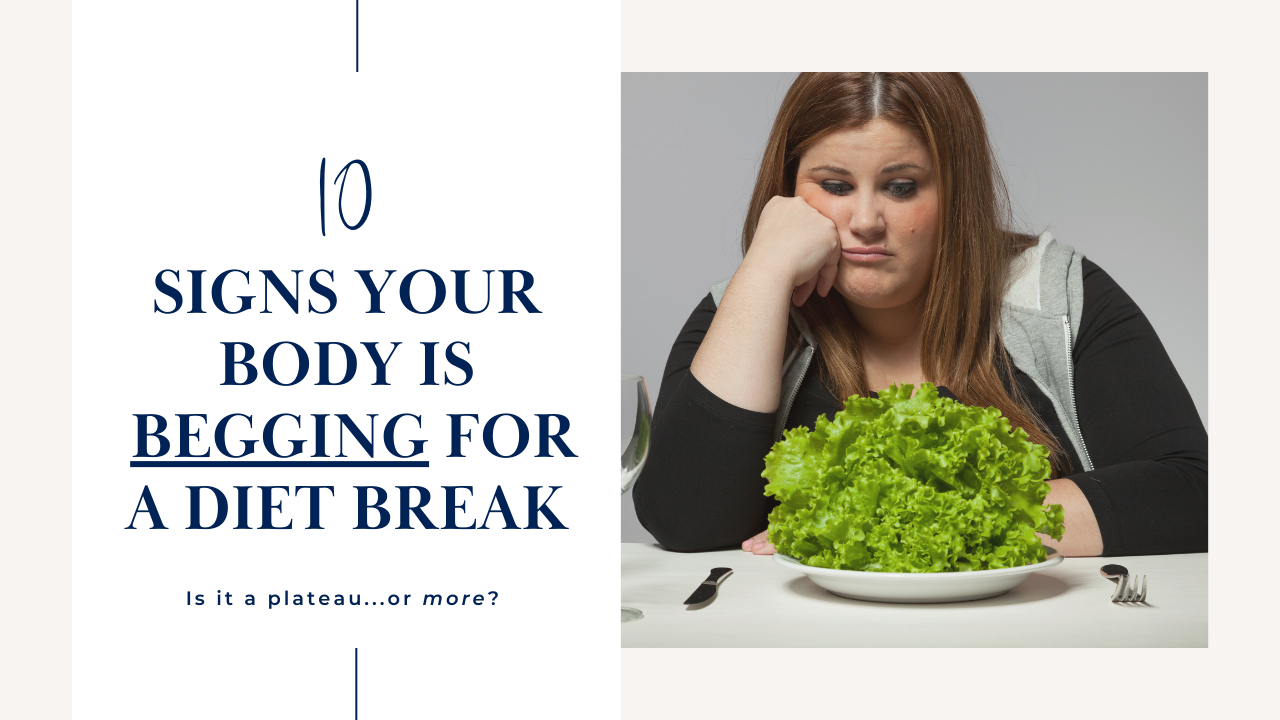 Because increasing calories always brings some concerns, I thought it might be helpful to have a synopsis of the process. We’re all different, and of course will respond in different ways, but at some point during the process we may feel like we are all alone in our reactions to increased cals.
Because increasing calories always brings some concerns, I thought it might be helpful to have a synopsis of the process. We’re all different, and of course will respond in different ways, but at some point during the process we may feel like we are all alone in our reactions to increased cals.
We often hear the success story of the person that upped their cals and dramatically started losing weight again, and I find that this can often lead to calorie increasing being looked at just as any other “fad diet.‘ With claims sometimes sounding similar to those of magazines, “lose 10 lbs in 10 days” many want to jump on the calorie upping bandwagon and start shedding that weight again. And who could blame us, we’ve all obviously been there, losing and gaining the same pounds over and over again, and we just want it off and are “willing to try anything”
Or are we?
It’s very important to note that although many see success very shortly after upping their cals, that this is not the case for most. In fact it’s quite the opposite. I am a STRONG proponent of giving your body the proper fuel that it needs, but it’s extremely important for me to make this point clear:
IF YOU’RE LOOKING FOR A QUICK FIX, YOU’VE COME TO THE WRONG PLACE.
Seriously, I’m not trying to be mean, just stating the facts. I know that many people are coming to this decision for different reasons, some are on those last few stubborn pounds, and others are just beginning their journey. Whether you have 5 or 100 lbs to lose, the process CAN work for you, but much patience and the correct frame of mind are required. Regardless of where you are or why you want to eat more, keep the main point the main point: It’s time to stop starving your body, and get/keep your metabolism on the right track. period. everything else that happens as a result (building muscle, losing fat, looking good, finally being able to wear shorts/bikini, etc) are just extra. Yes, we’re all a bit vain, in that we want to look good, and there is nothing wrong with that, but there are a zillion different “quick fixes” and starvation/over-exertion plans out there if that’s the route that you want to go (again, and again as you continue to re-gain the same weight), but I can assure you, this ain’t one of ’em.
So enough of that part of my ramble, and on to what to expect:
 Upon starting this process, some dive in w/little to no knowledge, and some take it slow. What I’ve found over time, is that those who take the time to properly educate themselves and prepare for the mental aspect, have much greater success. Often those that dive in, thinking that they’ll up their cals and fit into that bikini by next Friday have a rude awakening. We see the success stories of those that up their cals, but we don’t see the mental transition that had to take place before/during the process.
Upon starting this process, some dive in w/little to no knowledge, and some take it slow. What I’ve found over time, is that those who take the time to properly educate themselves and prepare for the mental aspect, have much greater success. Often those that dive in, thinking that they’ll up their cals and fit into that bikini by next Friday have a rude awakening. We see the success stories of those that up their cals, but we don’t see the mental transition that had to take place before/during the process.
Typically, a person is coming into this process after already having had “success” on lower cal diets, therefore this “success” (and I use quotes because they have typically re-gained the weight) will always be at the forefront of their mind as a “just in case this doesn’t work” option. So the first place of mental acceptance that a person has to arrive at is: IF YOU GAIN THE WEIGHT BACK, OR HAVE COMPLETELY STALLED, IT WASN’T A “SUCCESS.” A person who does not feel this way, will run at the first sign of trouble. You have to become completely convinced that super low cals, excessive cal burns through exercise, and eating under your BMR are no longer an option. Lowering cals, begets lowering them more during plateaus, and becomes a slippery slope, especially if you are already a too low of a cal level. You’ll eventually drop into that gray area, and your body either starts holding on to every morsel of fat, or completely stalls out. Think of it this way: WHEN YOUR CAR “RUNS OUT OF GAS,” IS IT “TECHNICALLY” COMPLETELY EMPTY? More than likely there is still some smidgen of gas in there, right?. But just not enough to make the large body of metal “go.” This is what happens to your body when you make it try to operate on bare minimums.
 Now, let’s say that you “get” all that, and are ready to get this party started and start losing weight again, all while stuffing your face. I mean, we can eat like it’s Thanksgiving everyday and watch the lbs melt off? It’s a win, win, eh? Um….no. The next thing that a person will have to realize it that, the longer you have been in the super deficit/overexertion phase, the more patience you’ll need to have during your “re-feed” phase. Yes, ultimately you want those lbs to melt off, but some people need to take a couple of steps back first, and will actually GAIN some “scale” weight up front (the “scale weight” can be different for each person, sometimes it’s just bloat/water weight, sometimes a person has lost the weight unhealthily, and the body must first recoup before it can function properly).
Now, let’s say that you “get” all that, and are ready to get this party started and start losing weight again, all while stuffing your face. I mean, we can eat like it’s Thanksgiving everyday and watch the lbs melt off? It’s a win, win, eh? Um….no. The next thing that a person will have to realize it that, the longer you have been in the super deficit/overexertion phase, the more patience you’ll need to have during your “re-feed” phase. Yes, ultimately you want those lbs to melt off, but some people need to take a couple of steps back first, and will actually GAIN some “scale” weight up front (the “scale weight” can be different for each person, sometimes it’s just bloat/water weight, sometimes a person has lost the weight unhealthily, and the body must first recoup before it can function properly).
The analogy that I like to use here can be understood by anyone who has a newer phone (be it Blackberry or iPhone), or other rechargeable device. When your battery runs out on your phone, it doesn’t matter what you do to it, there’s only one way to make it work again (other than putting in an entirely new, newly charged battery). You have to plug it in. Most phones or devices nowadays, will not start working the second that you plug them in. They often need a few minutes of “re-feed” charging before they will even *turn on*. Then once they’re turned on, you can’t just unplug them and walk away, you have to wait. Different devices take different amounts of time to charge, and different charging sources also come into play. If I plug my iPhone into the wall charger (when completely dead), it takes about 1-5 minutes before it can turn on, and then another 30-1hr before it’s completely charged. However, when I plug it into the USB on my PC, or car charger, it takes all.day.long.  But, regardless of where I charge it, and how long the process takes, the end result is that it’s now charged, and I can unplug it, walk away and expect it to perform whatever command I give it. I can continue to expect this, as long as I continue to charge it properly from here on out (not letting it go completely dead again), for the life of the phone.
But, regardless of where I charge it, and how long the process takes, the end result is that it’s now charged, and I can unplug it, walk away and expect it to perform whatever command I give it. I can continue to expect this, as long as I continue to charge it properly from here on out (not letting it go completely dead again), for the life of the phone.
Such is the case for your body. Your individual needs may vary. Your recharge may be different from the next person, you may have to gain a couple of pounds (not turn on yet) until your body has had it’s set “internal” time of charging. Then you may have to sit at a standstill/maintenance (still plugged in) until your body is fully charged. Once you reach this point, you will be able to move forward (finally unplug), give your body commands and expect full compliance, as long as you treat it right, agreeing not to starve it again. Quality/sources of food (wall charger vs. USB) will also affect the variations in length to the process for different people.
- If you’ve been a “low carber” for a while, then expect some water retention as you add healthy carbs back into your life. It’s ok. Your body needs carbs and has to learn to adapt to them again. In this scenario, probably 98% of the gain that you “see” will be water.
- If you’ve been a low cal “binge-er” (eating low cals for an extended period of time, then having a “binge” ever so often in moments of “weakness”), then expect your body to react negatively at first. It will assume that this is just another one of your “binges” and that “starvation” is just around the corner, thus the desire to hold on to everything that comes through. Once it senses that it will receive regular feedings, it will react accordingly by actually letting go..
- Remember, your body does not give a darn about your “weight loss” goals. It has one goal- survival. It’s up to you to convince it that you’re on the same team, and it will stop fighting you.
- Some people see results in a week or two, some need 4-6 weeks or more for things to completely balance out. Know this going in, and prepare to be in it for the long haul. The first 2 weeks are usually the mental aspect of eating more and convincing your mind/body that you are on the right track despite scale fluctuations. Following weeks, may become easier as far as the eating aspect goes, but be prepared for discouragement if the scale is still not moving. This is normal, and not the time to run for the hills. Often times a person needs to eat in a hypercaloric (surplus) or eucaloric (maintenance) state for some time before their body believes that they are not “crying wolf.”
Give your mind/body enough time to be fully convinced. Remember that your life will (hopefully) last for several more years, giving yourself deadlines like “this summer” or “tank top season” does not register w/your body. If you plan on “eating more” for the rest of your life, then this will only be a very short time in the grand scheme of things.
You will hear me say, over and over to people that are on the “Eat More” or “metabolism repair” path:
Take your time, pace yourself, enjoy the journey, and don’t quit just short of the finish-line.
Trust the process. You can/will reach your goals.
This is your life, not The Biggest Loser. There is no cash prize for starving yourself, while working out 6 hours/day.
Discover more from Eat More 2 Weigh Less
Subscribe to get the latest posts sent to your email.





Recent Comments